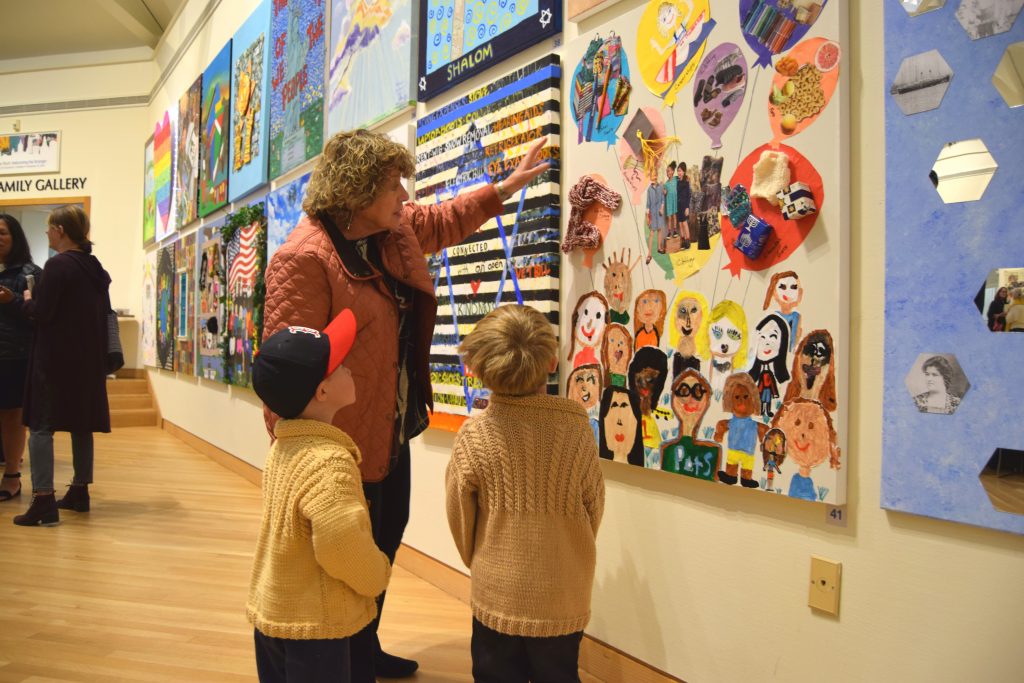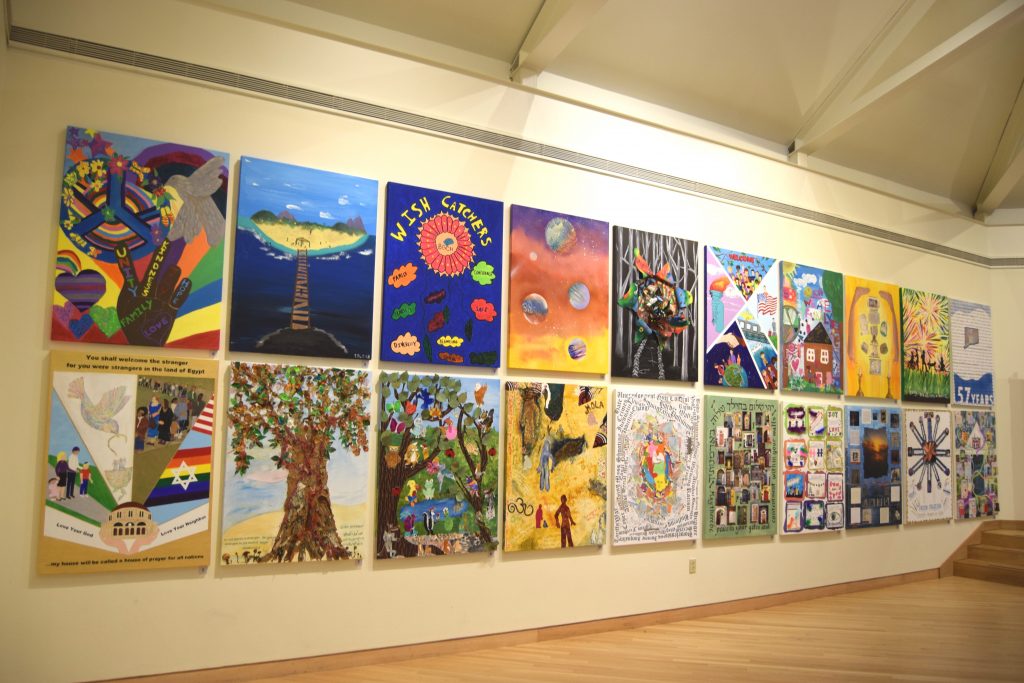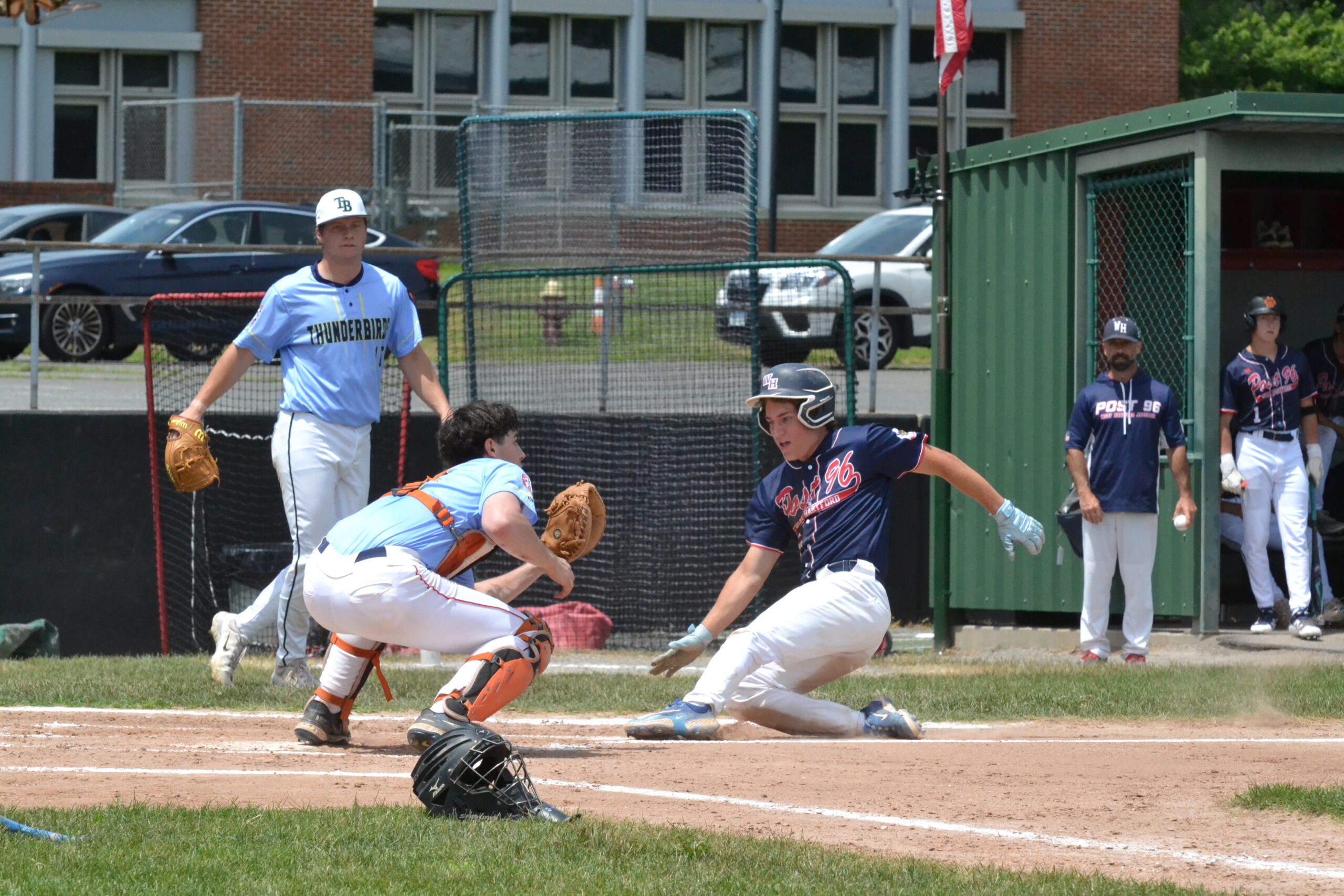Jewish Holiday Season: Meaning Behind the Many Fall Holidays

Audio By Carbonatix

"Welcoming the Stranger" exhibit at Mandell JCC in West Hartford. Submitted photo
What’s the meaning behind the numerous Jewish holidays in the fall? The Mandell JCC in West Hartford has provided an overview.

“Welcoming the Stranger” exhibit at Mandell JCC in West Hartford. Submitted photo
Submitted by Mandell JCC Outreach & Jewish Engagement Director Danielle Moghadam
It’s officially busy season, children have settled into a new school year routine, fall sports fill the calendar and the first colors of fall usher in the annual inundation of pumpkin spice lattes and apple picking.
For many the onset of fall also signals the beginning of the Jewish High Holiday season. As Jews worldwide prepare for the month of Tishrei and the first holiday, Rosh Hashanah (literally head of the year, or new year), we reflect on the year that passed and the new cycle we are about to embark on.
The secular New Year is a time for champagne toasts, wild fireworks, and disco balls descending on crowded squares throughout the world. Rosh Hashanah provides a completely different New Years’ experience.
Jews spend the two day holiday deep in prayer, attending services at their synagogues, eating symbolic foods, and thinking about the past year. We wait with anticipation to hear the shofar, a trumpet-like instrument made of a ram’s horn. We eat apples dipped in honey to induce a sweet new year and our typically long and regally shaped challah (braided bread eaten on the Sabbath) become round and dotted with sweet raisins, reminding us of that life moves in cycles and we should wish one another a sweet and joyous coming year.
Rosh Hashanah is followed by the Ten Days of Awe, the time between the New Year and Yom Kippur, or the Day of Atonement – which this year fell on Wednesday, Oct. 9.
Jews spend these 10 days reflecting on the past year, asking for forgiveness from friends and family for ways in which we have wronged them. We focus on repentance, forgiveness and charitable deeds. During this time many Jews maintain a more austere lifestyle, refraining from luxuries such as leather shoes.
We are currently preparing for Sukkot, the annual seven-day harvest festival. Jews build sukkahs (or huts) to remind us of 40 years of wondering in the desert. Sukkahs are built with at least one open side and one must be able to see the sky, they are typically flimsy and temporary structures.
It is considered a mitzvah, or good deed, to enjoy meals in the sukkah and more so to invite others to join these meals. Sukkot is a communal holiday, one that promotes dialogue amongst people and encourages us to reach out to others, to help those in need and to share our bounty.
Sukkot is a joyous holiday; we shake the Lulav (a mixture of palm, myrtle, and willow) and Etrog (a citrus fruit) to the north, south, east, and west. The coming together of these arba minim, or four species, reminds of the unity of all people. We may come from different walks of life, but together we become more than we could be alone, touching on the four corners of the earth.
Currently, the JCC in West Hartford has built a sukkah in the Chase Family Gallery where the “Under One Roof” exhibit is on display. The theme of this extraordinary collaboration is “Welcoming the Stranger.” The JCC invited 50 Greater Hartford agencies to create a canvas highlighting what it means to their organization to “welcome the stranger.”
With Sukkot being a “communal holiday,” this was the perfect time to bring together our Greater Hartford community. The exhibit will be on display through Nov. 15 at the Mandell JCC.
After Sukkot we prepare for Shmeni Azeret, one of two days of the conclusion of Sukkot where we pray for rain, the time marks the beginning of the rainy season in the Mediterranean region.
The following day is Simchat Torah, a holiday of pure joy. Jews around the world celebrate the completion of the reading of the Torah, or the Jewish holy book. We dance with the scrolls; we celebrate another year coming to an end, another cycle complete.
Simchat Torah also marks the end of the Jewish busy-season; and what a season it was.
Like what you see here? Click here to subscribe to We-Ha’s newsletter so you’ll always be in the know about what’s happening in West Hartford!

“Welcoming the Stranger” exhibit at Mandell JCC in West Hartford. Submitted photo



